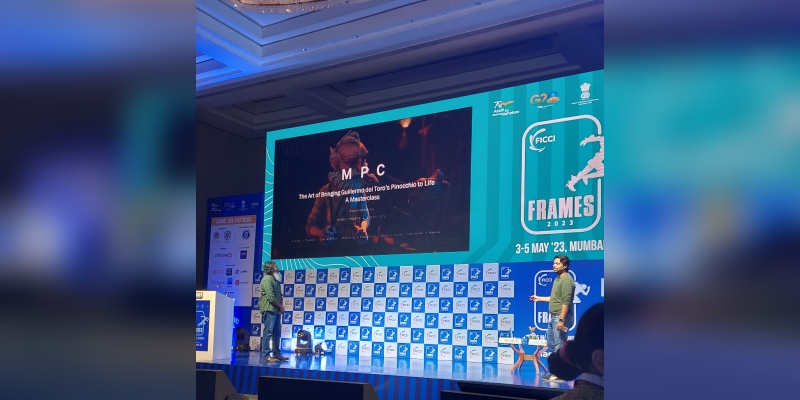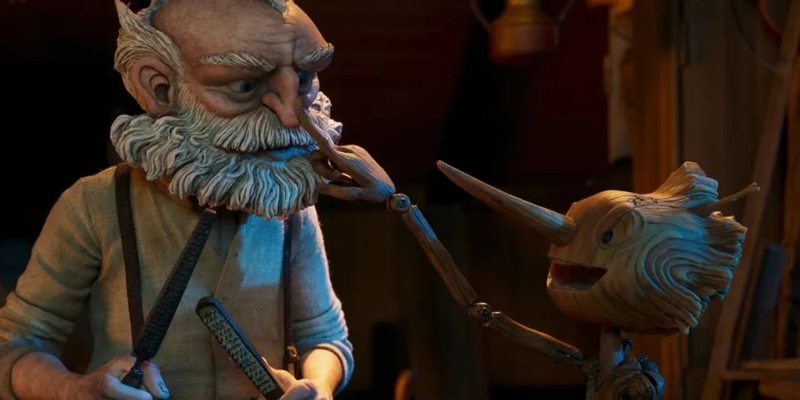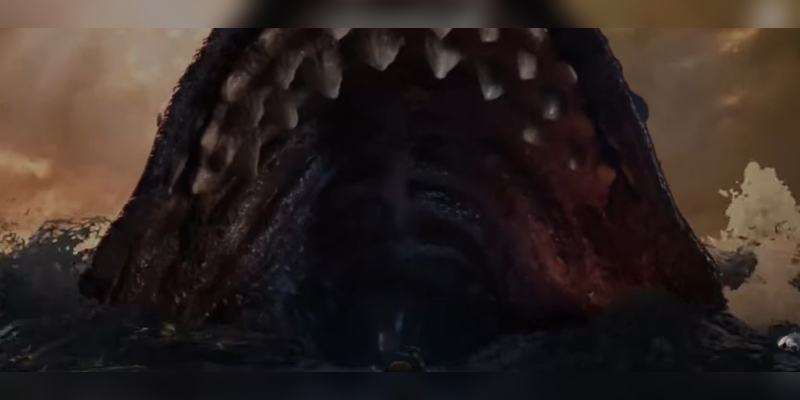
Guillermo del Toro’s Pinocchio is a dark, adult retelling of the classic fairy tale, following the adventures of a wooden puppet who dreams of becoming a real boy. The film premiered on Netflix on 9 December 2022. One of the key contributors to the film’s success was the Moving Picture Company (MPC) – the studio that created the film’s animation and visual effects.
MPC’s team of animators and artists helped bring Pinocchio’s world to life with their intricate visual effects work to support the filmmaker’s vision for the environment and match the stop-motion, adding depth and dimension. At FICCI Frames 2023, MPC India supervisor Vinay Thakur and CG supervisor Inigo Vimal Roy unveiled the VFX and animation magic behind this Oscar-winning feature.
With 625 VFX shots, the animated film took more than two years to produce. The workflow included roto and paint prep; assets, rigging, animation; texturing and look dev; matchmove and rotoanim; layout and FX; DMP and environments; lighting and rendering; and compositing. Maya, 3D Equalizer, ZBrush and Mari were some of the many software used for the work.

The puppets used for stop-motion had rigs attached, so the MPC team had to first remove them frame by frame, using paint prep. Then they had to create CG models and give them colours and skin. The next step was to add joints and pivots to CG models that were humans. This is done so that artists can animate the objects. After this, artists matched the movement of the live-action camera in CG and create scenes based on the footage. When all the assets and other elements were put together, the MPC team did the lighting. Finally, all elements were layered on the frame by the compositing team.
Explaining one scene where Pinocchio’s character is standing in front of fire, the team said that for fire, it took inspiration from a test done by a stop-motion studio using fabric. Instead of going for PyroSim which is used for fire simulations, the team went for ClothSim, which is used for cloth simulation. The team used fire simulation for other scenes involving torch light, bonfires and explosions. For this particular scene, the team had to re-light the frame from behind Pinocchio to in front of him, in compositing. The intensity of the lighting had to vary based on the fire movement.

In one scene which takes place in water, Pinocchio’s boat is swallowed by a dogfish. For this scene, the team projected the sky using a dome, and in comp, relit the dogfish according to the sky. Since this is a stop-motion film, the water surface had to look like a material. To make it look like plastic, the VFX team used a static displacement texture. The foam in the water was made using crystal beads. Thakur and Roy revealed how it took nearly two months to achieve the look for some of the water simulation.
Another challenging scene was the one that takes place inside the mouth of the dogfish. The team created the organic environment of a living creature. It created the inner mouth, a waterfall area and the stomach of the fish. While some elements in this scene – like the shipwreck and half of the lighthouse – were parts of the actual set, rest all were created using CG.
Pinocchio has won big at Annie Awards, BAFTA Awards and VES awards. It has also grabbed an Academy Award in the Best Animated Feature category.
